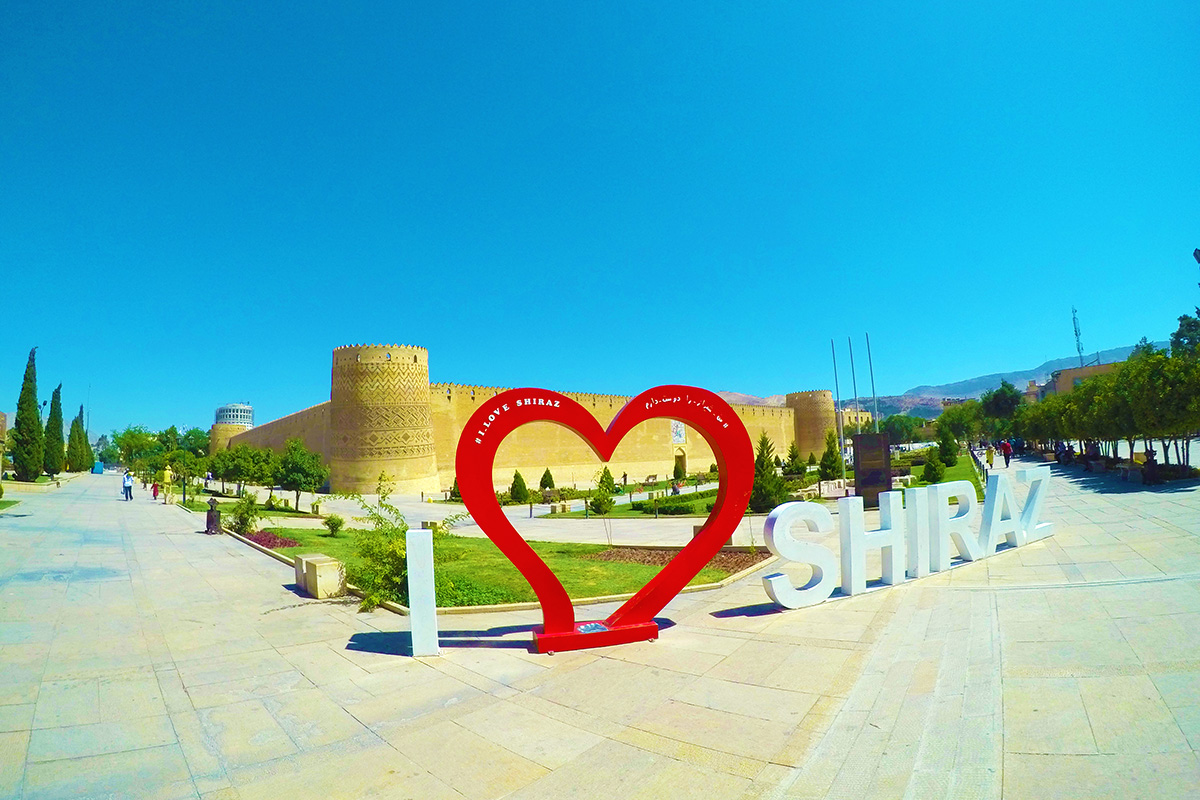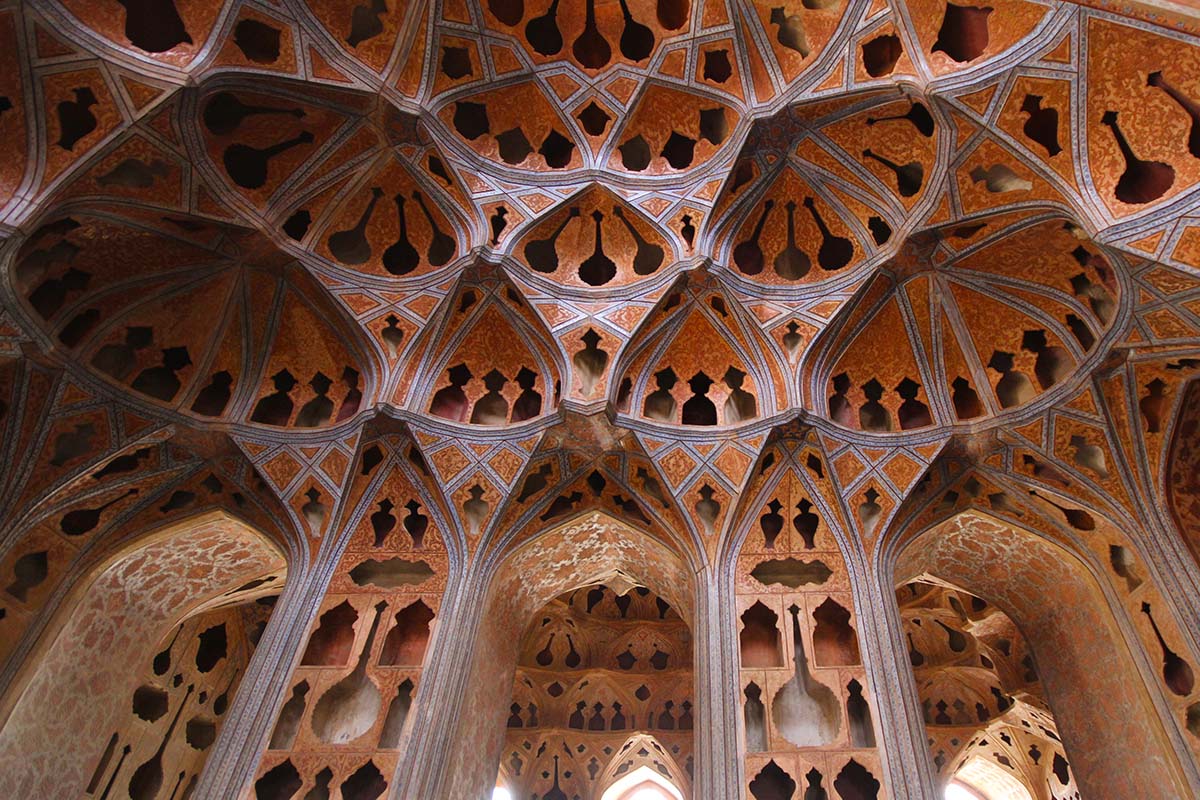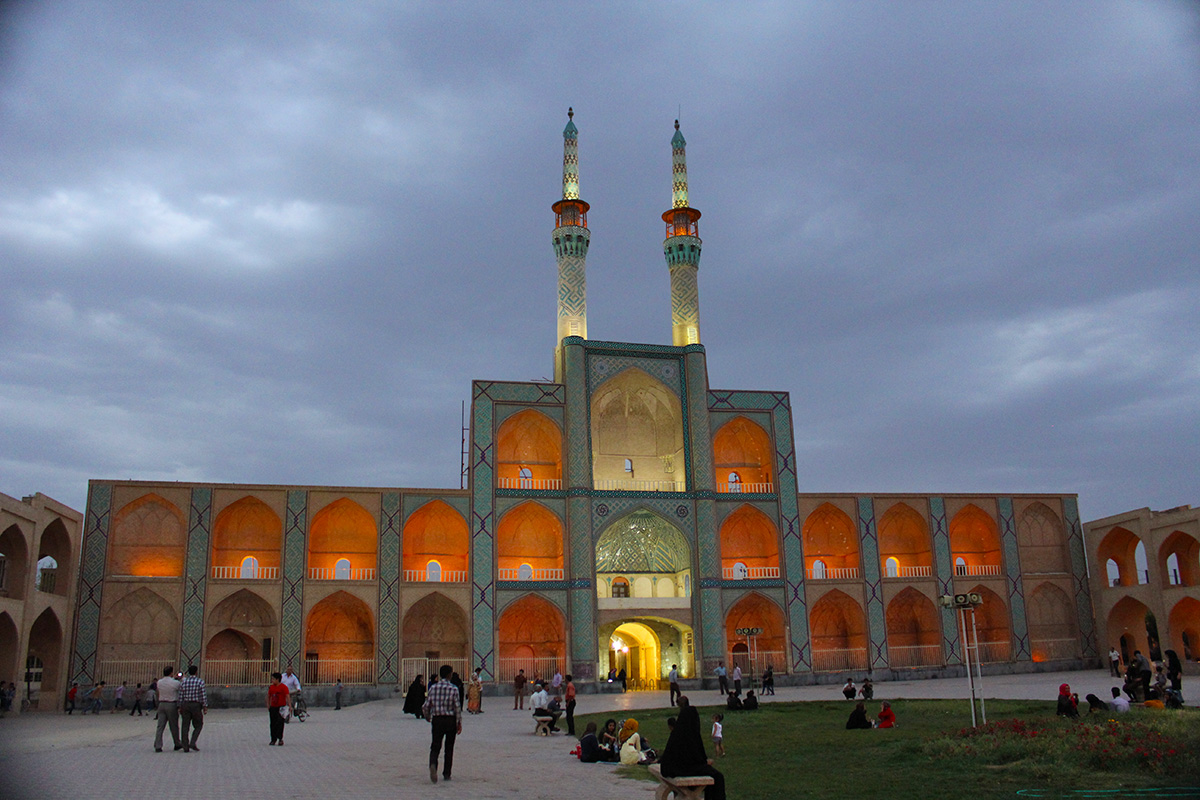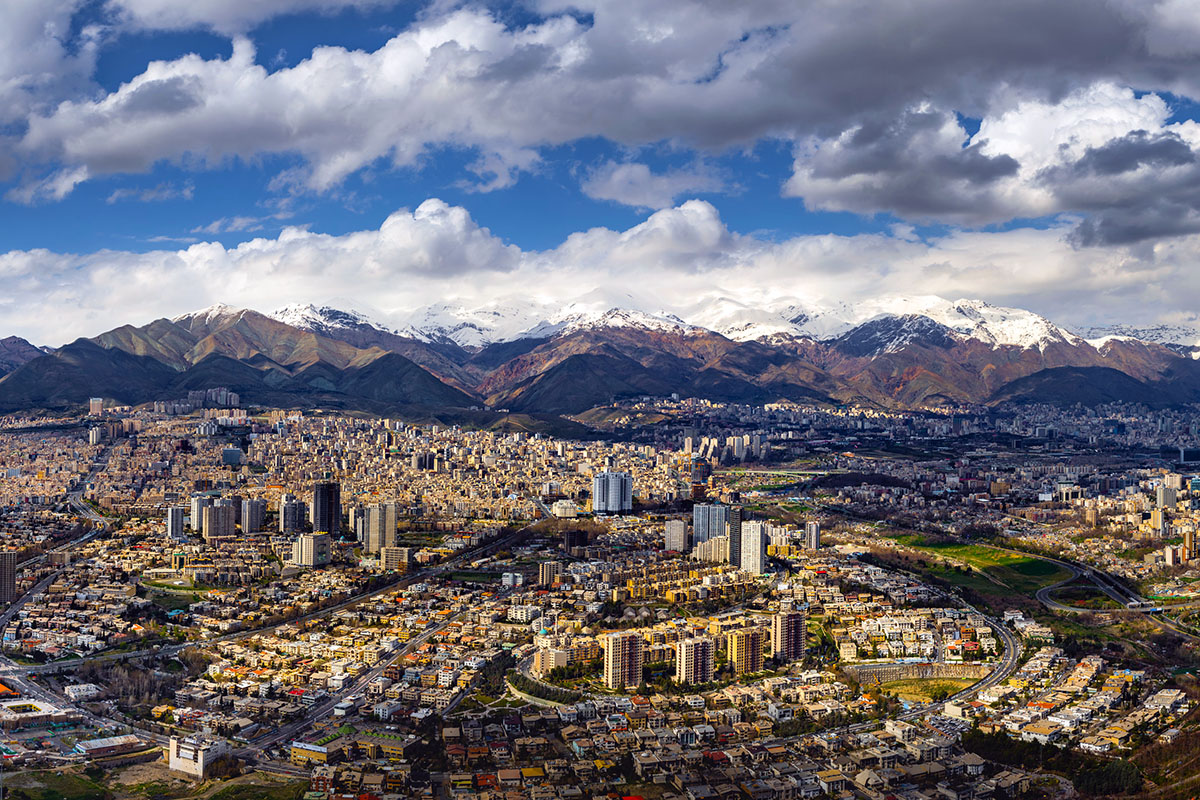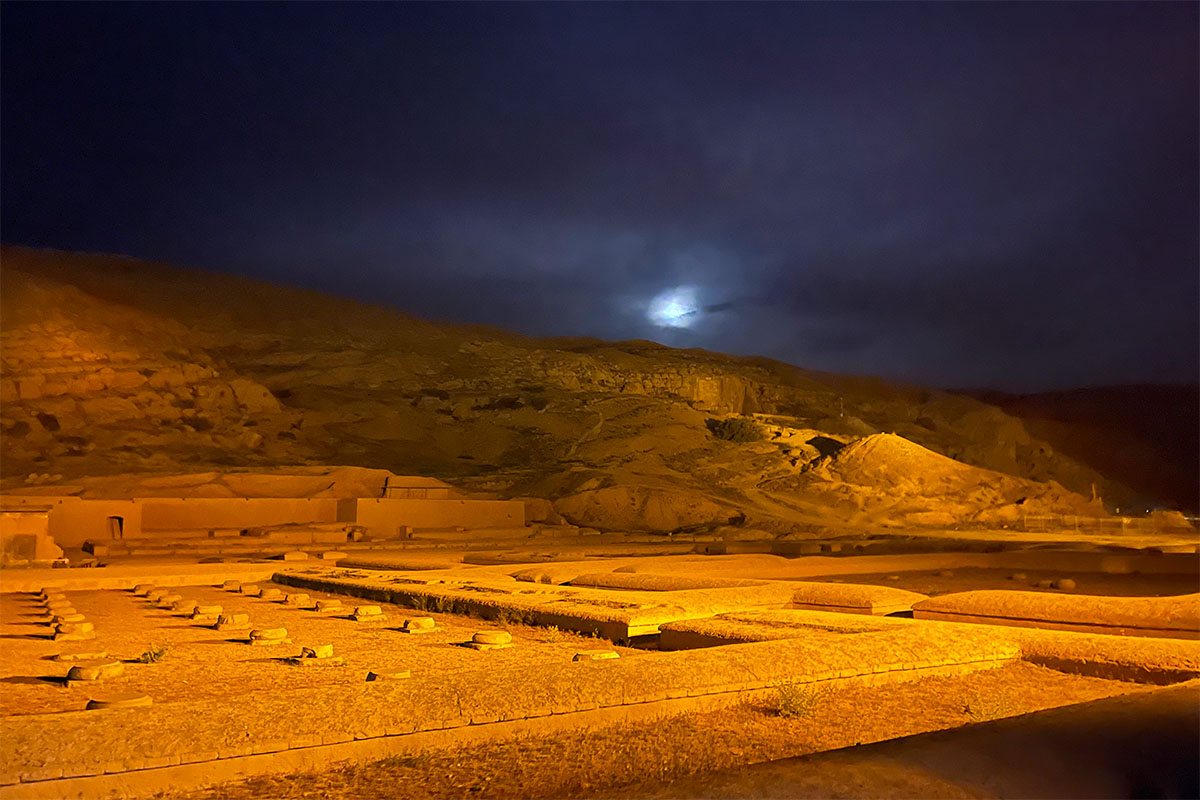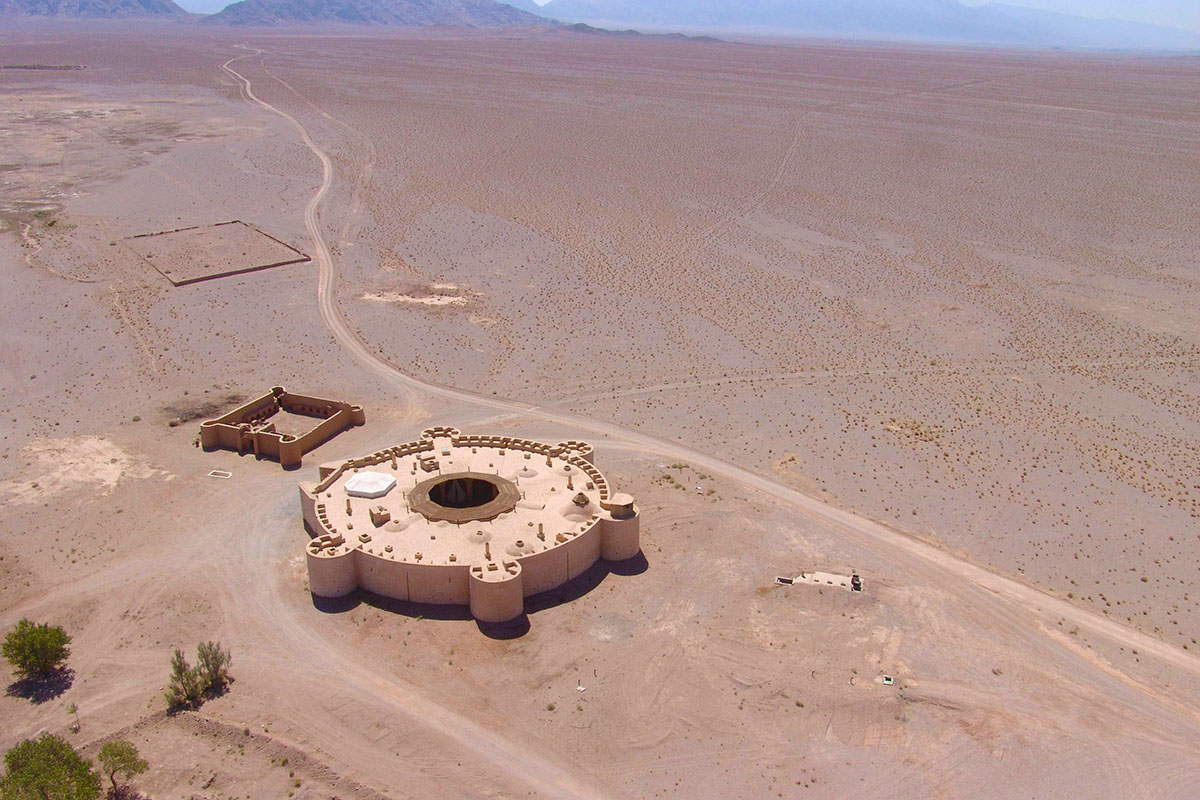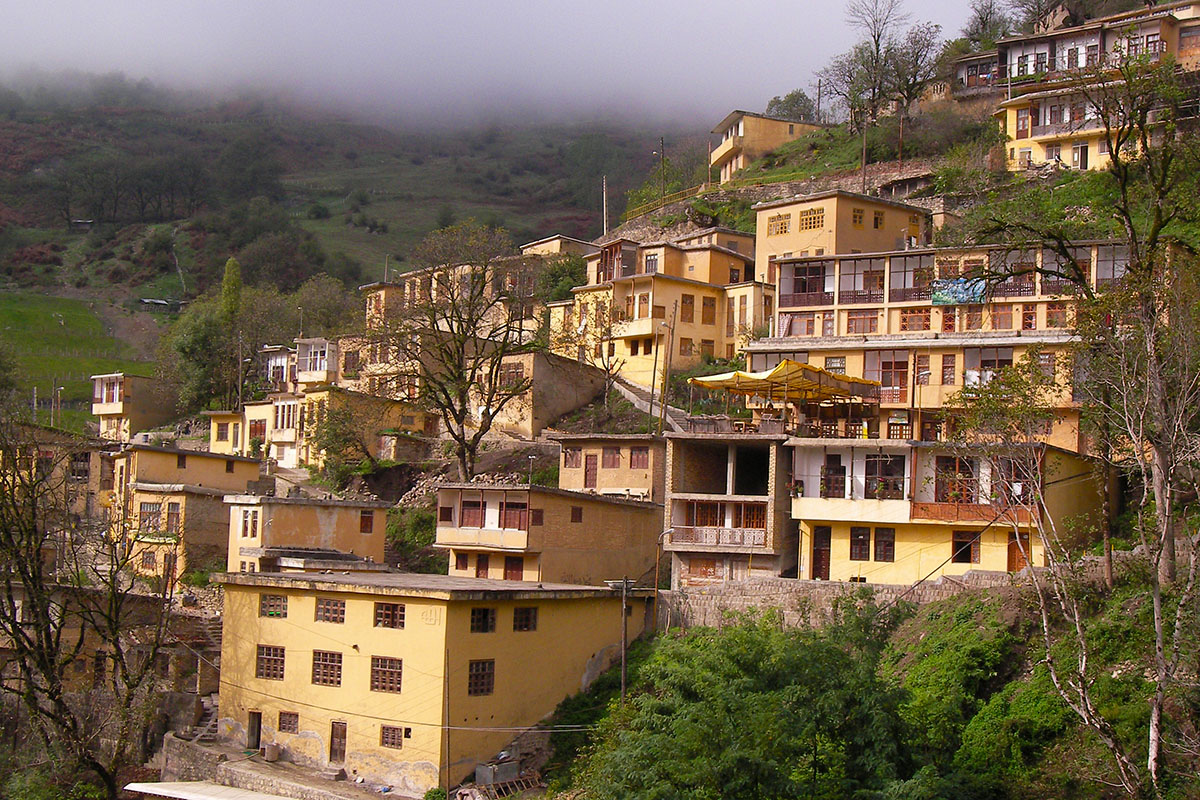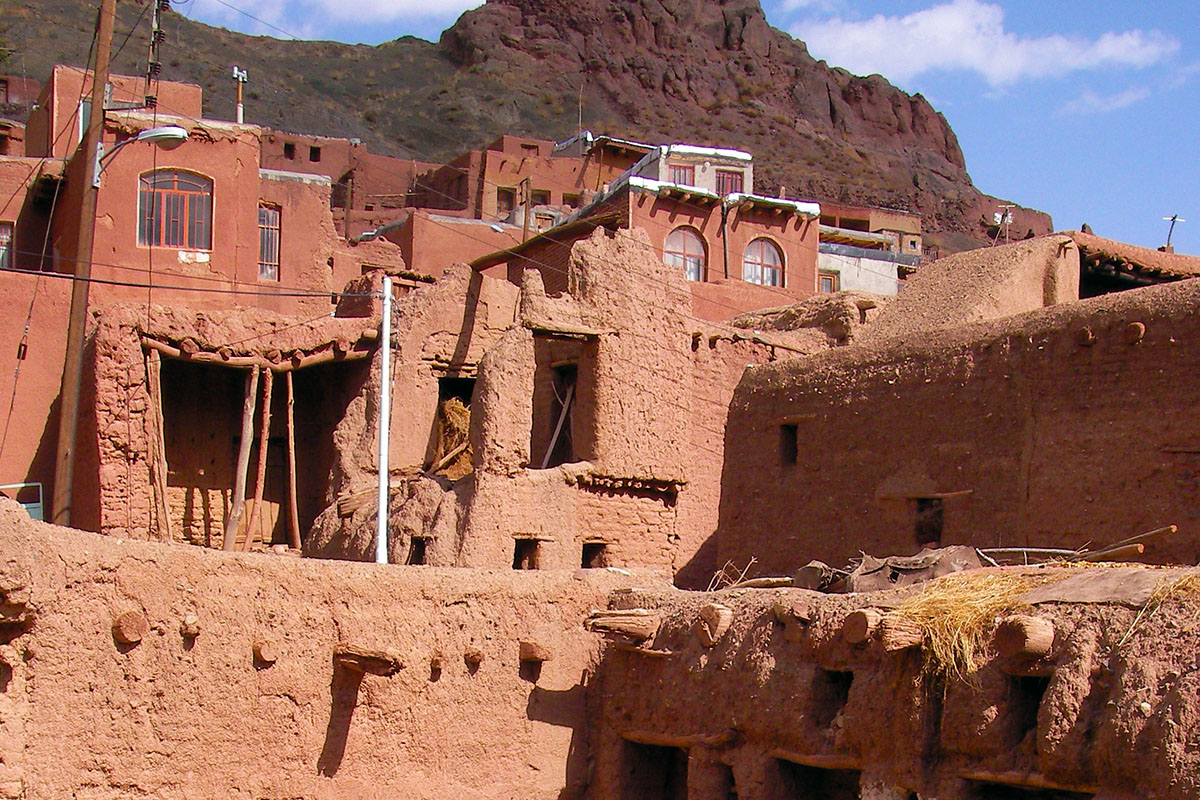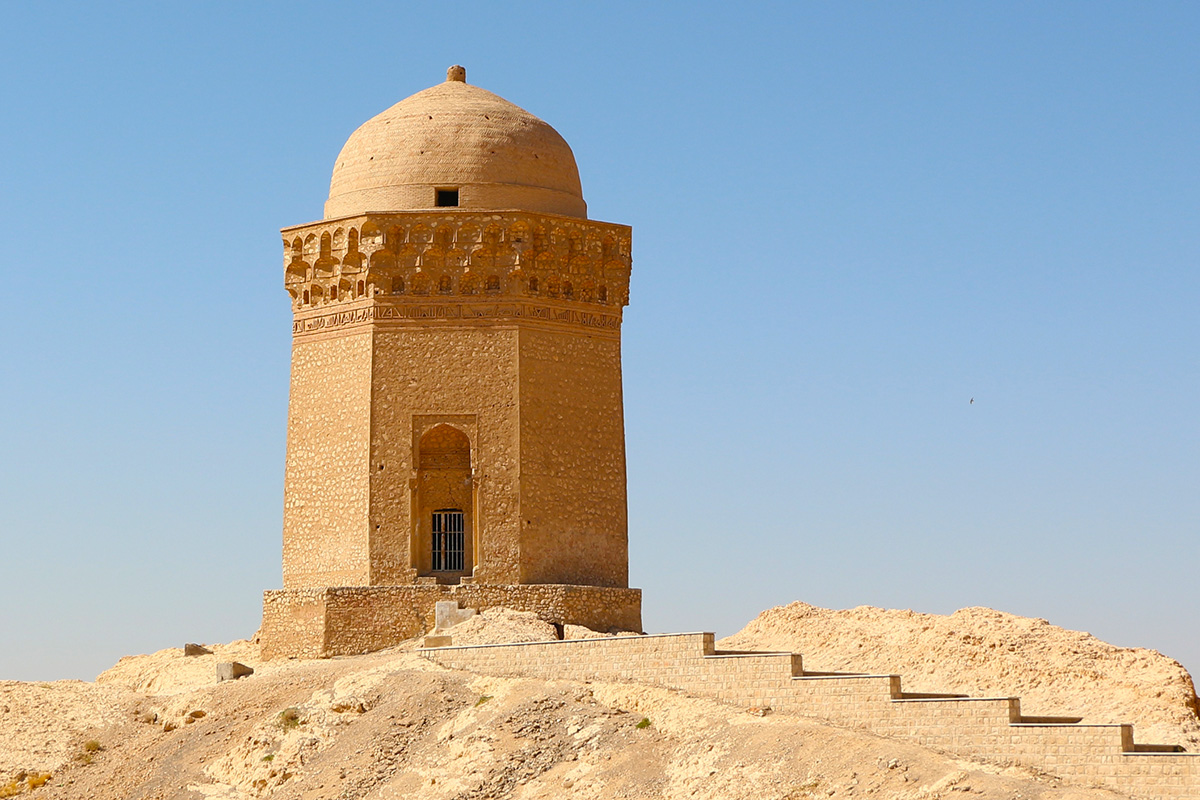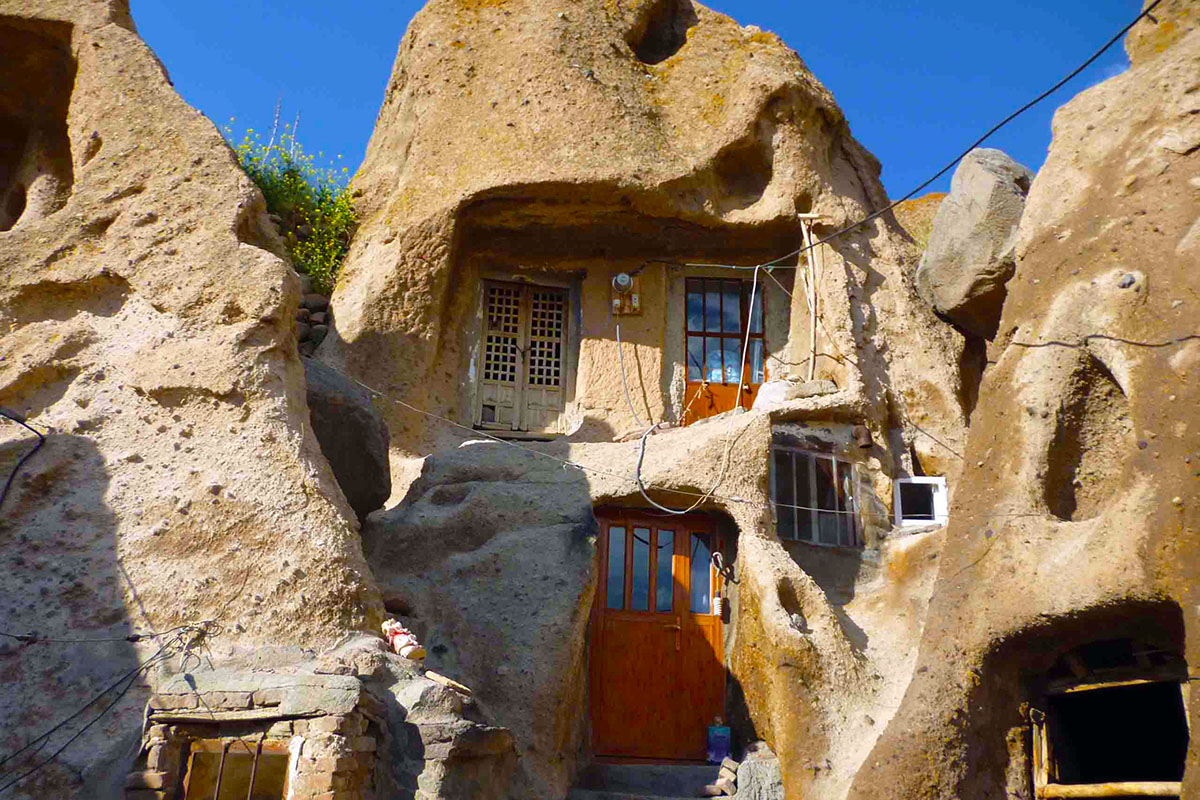Tehran, the capital city of Iran is one of the largest cities in sought west Asia and twenty –first largest city in the world. Tehran province stands on the western part of Dasht-e-Kavir desert on the southern slops of Alborz Mountain Range. Tehran is bounded on the south by the small Ray city and on the north by Tajrish state which are now attached to Tehran. The province is spread over an area of 18814 sq. kilometers, 1200 meters above sea level and has a population of around 14 million. Tehran can be divided into three natural regions: The mountainous area, slops and plains. The Mountains in the north are parts of the central Alborz Mountain Range in which Kahar, Siah Sang and Towchal peaks are the sources of numerous rivers running through the province. The southern parts of Alborz Mountain Range, there are hillsides with many towns and villages. The presence of rivers such as Karaj, Jajrod, Haraz, Taleghan and Lar as well as common mineral springs and 1000 wells make Tehran as a tourist destinations from all around the world.
History
For most of its history, Tehran was a small town to a relatively small population but after it was elected as the capital city in the late 18th century, it gradually began to expand and develop. Today little of Tehran is left old and modern high-rise buildings, bridges and amazing highways are dominated the city. Tehran was mentioned in historical account in the 11th century for the first time as a small village near the Ray city, an important city during the history that was situated in the way of Silk Road. After destruction of Ray city by earthquake, a new city was built over the ruins of Rey in the name of Europos (old name of Tehran). In 1885, Agha Mohamad Khan, king of Qajar occupied this village and 9 years later he declared it as the capital of Iran by the name of Tehran.
Economy
Economy of Tehran as the capital city of Iran has shown tremendous growth over the past few years. If we look at the reason behind the Tehran’s growth, we find that half of the country's industrial activities are located in Tehran. Factories which works in different fields such as electrical and electronics, textiles, sugar, automotive, cement and chemicals and also, large markets for carpet and furniture throughout the country are situated in Tehran. Oil refinery is located in the southern outskirts of Tehran. Moreover, many religious monuments such as mosques, churches, palaces and temples are placed in different parts of the city which turn Tehran as a tourist center.
Weather and climate
The three most major factors impacting Tehran’s climate are the geographical location of Tehran, the blowing of western rain-bearing winds and its altitude. the highest points in the north of the city is 2000 meters above sea level and the lowest points in the south is 1050 meters above sea level , therefore from north to south , the temperature increases and the level of rainfall goes down. The weather is cold and dry in the northern regions and it is warm and dry in the southern region. As a matter of fact, Alborz Mountains make the weather moderate and mountainous and plains make the weather dry and semi-arid. In the summer months of June to August, the temperature may reach a maximum of 36ᵒC which is hot and semi dry and in the winter months of December to February, the temperature drops to 0 ᵒC which is getting cold, the cold seasons last 3 or 4 months which is the favorite month for skiing in the Alborz Mountain slopes. The spring months of March to June, the weather grows warm. The average annual precipitation is estimated 226.5 millimeters.
Transportation
BUS
Tehran includes four bus terminals which are located in the South, East, West, and Bei-haghi Park-Drive Terminals in the north. VIP buses are quick, convenient and a safe way to travel and have had many improvements in recent years, such as more frequent services and improved accessibility. There are highways from Tehran to the big cities such As Shiraz, Esfahan and Mashhad.
Airport
Tehran is served by Mehrabad International Airport, the old airport which doubles as a military base located in the western part of the city, and Imam Khomeini International Airport, 50 kilometers (31 miles) south, which handles most of international flights .The new airport is efficient and includes all facilities.
Train
Tehran contains the central train station with connecting services to various cities in the country which is located in Rahan Square, southern part of Tehran. There is also safe, modern and comfortable weekly train from Ankara in Turkey to Tehran called the Trans-Asia-Express introduced in March 2001. The trains contain modern air-conditioned first class with an elegant restaurant serving affordable full meals and 4 berths coaches to rest easily.
Availability of transportation stations
- Baggage
Storage service is available
- Wheelchair
Access to the train and bus stations.
Wireless Internet:
WIFI Internet is accessible in the station.
Getting around
With the growth in population, comes a growth in the size of a big cities which Couse to increase the facilities of transportation system for public such as building tunnels and bridges, subways railway system and BRT (bus rapid transport) buses. Subway system (Metro) was constructed by 1999 in Tehran which help to decrease traffic jams. The metro in Tehran runs a 170 kilometers in 4 lines, operating at four capacities with several stations all around the city carrying more than 2 million passengers in a day .the most outstanding feature of Tehran metro is its reasonable price.
Cultural attractions
With the advent of globalization and improvement of numerous facilities such as employment, basic infrastructure and education, many people have been migrated to Tehran city from all over the country seeking for a better life ,therefore we can say the traditions and cultures in Tehran are combinations of almost all rituals and social characteristics of Iranian life style.
Nowruz
New Year begins with the ancient ceremony of Nowruz by spreading Haft sin. Other symbols and customs are Khaneh-Tekani which means cleaning the home, buying new cloths and visiting each other.
Ashura
One of the occasions which almost all Iranian, especially citizens of Tehran, commemorate is Ashura. It refers to tenth of Moharam on 10th October in 680 AD which the third Shiites’ Imam, along with 72 of his fellow fought with the tyrannical ruler of Umayyad caliph on Karbala Desert’s battlefield. In ten day, people commemorate this religious ceremony by playing mourning tunes along Sinne Zani (strike their chest) and Zangir Zani (involving use of chain) to commemorate Imam Hussein and the goal of his uprising.
Ethnic arrangement and language
Due to its geographical location, Tehran has been one of the first spots where migrant tribes of Aryans and natives of central plateau were inhibited. Tribal life, with all fascinations of their Yeylaq and Qeshlaq, can be seen in the eastern part of Tehran province mainly in Dasht-e-Lar plain. The original inhabitants of Tehran were spoken Persian but several major ethnic groups with different local languages have been migrated to the city in centuries. 98% of the population in the city speak Persian or Farsi with the Tehrani accent and the remaining 2% are in the immigrant communities who speak their regional languages with different dialects include Gilaki, Mazandarani, Armenian, Arabic, Azeri, Kurdish and Lori.
Tourist attractions
Palaces of Tehran
Palaces in Tehran are the excellent examples of the glorious past of Iran. Apart from being a royal residence of Kings and their family, these palaces are the finest examples of the brilliant range of architectural style and artistry.
Niavaran palace
Niavaran is one of the uptown districts of Tehran with the beautiful gardens and fresh air which was the resistance of the last Persian king, Reza Shah Pahlavi and his family. Niavaran palace is a historical and cultural complex which is situated in the northern part of Tehran, Shemiranat and with an area of 9000 square meters and two and half floors building is placed in the north eastern part of Niavaran Garden. The construction of this building began in 1337 by an Iranian designers and architectures and it was completed in 1347. This magnificent mansion dates back to Qajar period and was intended as a summer house and also, the place for entertaining foreign guests and was later change to accommodate for resistance of Mohammed Reza shah and his family. The modern style of Niavaran palace was constructed in the second Pahlavi period and now the Palace consists of a series of museums, Ahmad Shahi pavilion, the private library and other historical and cultural attraction including private cinema, the blue hall and Jahan Nama gallery which is opened to the public. When you enter the Niavaran Garden, the first small building is Kushk-e- Ahmad Shah which was built 100 years ago by Ahmad Shah Qajar as a summer house. This pavilion with two floors, the gabled roof and brick facade decoration is in the middle of Iranian garden. The most important building in Niavaran complex is Saheb-Qaranihe. This palace was originally ordered by Fathe-Ali-Shah to build and latter another Qajar king, Naser-AL-Din Shah destroyed the previous building and the new magnificent palace was constructed. The reception hall, the tea room and the antiques room and several rooms for playing game and several dining areas are located on the first floor. The upper floor which was belonged to the Mohamad Reza Pahlavi includes full of luxury items that are mostly gifts from foreign government officials. In another parts of Niavaran complex is the art gallery with the most amazing painting works from Picasso to other Iranian artists which were mostly gifted to the Pahlavi family or were purchased. The ceiling of art gallery is itself an interesting work of art. In the front yard of the Niavaran Garden, the first Iranian parliament in more than 100 years history can be seen.
Golestan Palace
Golestan Palace, also known as palace of flowers is the vestige of Iranian civilization that recently has been registered on the UNESCO World Heritage .The complex was built in Safavid era and was renovated in the Qajar dynasty. It is one of the most beautiful and oldest royal palace in Tehran, at Arq square. This palace was the official residence of royal king’s family such as Agha Mohammad Khan Qajar, Fath Ali Shah, Naser al-Din Shah Qajar and Mozafar al-Din Shah Qajar and was used for formal receptions during the Pahlavi era. The two most important ceremonies to be held during the Pahlavi era were the coronation of Reza Khan in Takht-e-Marmar and coronation of Mohammad Reza Pahlavi in the Museum Hall. The complex consists of 17 palaces and museums and halls in different locations for special purposes. Some of the highlights are mentioned as follows:
Emarat-e-Badgir
One of the most outstanding buildings worth to see is Emarat-e-Badgir or the building of wind catchers is located in the south side of the palace. There are four wind towers of green, yellow and blue glazed tiles on a golden cupola which is allow the cooling wind move through the structures. The most characteristic features of the palace date back 19th century. Now the complex consists of several structures including museums, palaces and halls. Marble carving, Wood carving, plaster works, paintings and latticed windows are the excellence examples of Persian art.
Talar- e- salaam
It is the beautiful hall which was founded for establishing of Museum after Naser-aldin- Shah first journey to the Europe in 1290. Later it was change to the reception greeting hall the kings used to greet foreign dignitaries came to Iran.
Negarkhane
On the north side of the Golestan Palace, between the Art Gallery and Karim khan’s private place, there is a magnificent picture gallery called as Negarkhane, the place where the exquisite collection of Qajar paintings and works of the famous artists can be seen.
Mirror hall
One of the most famous parts of the Golestan Palace is mirror hall with the exquisite mirror work. It is famous for Kamal-Al- Molk paintings. The Berelyan hall and Shams- Al- Emareh are also the most outstanding buildings to visit in Golestan Palace.
Saad Abad palace
Saad Abad complex is located in the north of Tehran and in the west of Golab Dare, small state in the north of Tehran. It was the first inhabitant by the Qajar monarch. This palace shows a historic trend in Pahlavi era. The complex contain 21 museums which are opened to visitors. The white house is biggest of all the palaces. Its construction dates back about 100 years ago and was used as a summer house of Qajar kings and then turned in to Mohamad Reza Pahlavi private place. It includes many historical places such as dish museum where many hand design dishes can be found. The military museum is located in the heartland of Saad Abad complex and represents the history of Iran’s military situation. Two artillery for more than 200 years ago with Persian touch is at the entrance of museum. Personal guns of Iran dating back to 17th century and some first machine gun ever made in Iran are located in this museum. 110 hectares Golestan palace with its 18 large and small palaces was converted into a museum after the Islamic revolution. Museum of Anthropology, Plating, Fine Arts, the nation's Palace Museum, the Palace Museum, green and the National Museum of the water are the best places you can visit in Golestan palace
Azadi monuments (tower and square)
The Azadi tower in the west side of Tehran was designed and built in 1349 by Iranian architecture, Hussein Panahi, to recall the 2,500 year celebration of the Persian Empire. The construction of the tower took about 30 month nonstop work. With an area of about 400 square meters, this massive tower is situated in central of Azadi square which is the second biggest square of Iran with an area of 50000 sq. m. and hexagonal green gardens. This oval shape monument was named as shahyad square before the revolution. The architecture of the structure is a combination of Achamanid, Sassanid and Islamic architecture styles. The elliptical arc in the east and the west of the tower is belonged to the Sassanid era. Standing 50 meters tall, it was the tallest man-made structure of its time and the four-story building has four elevators and two staircases with 286 steps. The fourth floor is decorated with honey comb design windows at the fourth sights .The Azadi tower is recognized as a cultural center consisting of several theaters, galleries, libraries and museums. Forty-six thousand pieces of rag stones and turquoise blue grooves of the tower as a landmark is one of the interesting worth seeing places of Tehran.
Milad tower
You couldn’t possibly visit Tehran without seeing the Milad tower which is recently become a recognizable icon for the city. This multifunctional skyscraper rises 435 meters tall is located in the north of the city and is the sixth television and telecommunications tower in the world. The construction of this octagonal building was finished in 2008 by Iranian engineers with the amazing modern and traditional Persian arts. It is more than just a tower. Milad tower complex is an international communication center includes conference center, Milad tower, 5-star hotel and international trade center. The base of the tower includes12 floors which contains souvenir shops such as Persian rugs and Iranian handicrafts, VIP and the world’s biggest revolving restaurants at the top in the head structure of tower which gives you spectacular views of Tehran city and many entertaining centers. On top of the revolving restaurant is the open observation deck and its roof which makes the tower the most visited Tourist destination in Tehran. Although it is basically a TV and telecommunication center, the milad tower provides social and cultural services such as cultural festivals, scientific and social gatherings.
Darvaze Dolat
One of the oldest places in Tehran that includes some interesting sites and beautiful gardens such as Shah-garden, Zalal-sltan Park and Amin-Al-doleh Park is Darvazeh Dolat .
Darakeh
Darakeh is one of the most interesting place in the north-west of Tehran. Many people prefer Darakeh for hiking and mountain climbing. Fantastic gardens, the old houses with gabled roofs in narrow streets and abundant trees are the characteristics features of this beautiful village. Haft Hoz, Kara Waterfall, Band Abdollah and Jozak Waterfalls, Palang Chal, Asiboo and Haft Cheshme are among the most beautiful and magnificent areas in Darakeh.
Ski resorts
Iran's geographical position and excellent winter conditions make it possible for great skiing and snowboarding experiences in winter.
Shemshak-Piste
Shemshak is a ski resort situated to the northeast of Tehran in the Alborz mountain range and is the second largest ski area in Iran after Dizin and came into operation in 1958. It includes two ski lifts, three tele skis and two Hammer tele skis. The slopes lie at an altitude of 2550m to 3050m above sea level. The resort includes two main slopes, each with a chair lift that meet at the top and several lifts. There are also lighting facilities for night skiing. Shemshak is conveniently situated about a 55 minute drive from Tehran, 10 km from middle-slope parking of Dizin and 5 km from Darband-Sar ski resort.
Tochal
Mount Tochal is a mountain in the Alborz range and a ski resort adjacent to metropolitan Tehran, Iran. The mountain has a 12 km long ridge-line. The highest peak, also called Mount Tochal, is at an elevation of 3,964 m (13,005 feet) above the sea level. A gondola lift, named Tochal Telecabin runs from Tehran to the Tochal Ski Resort.
National Museum of Iran
The National Museum of Iran is one of the magnificent museums located in downtown Tehran. With an area of 20,000 square meters was built more than 70 years ago and it was designed by Andre Godard, a French architect to offer the best historical and archaeological arts in more than 300,000 objects. In the museum, there are findings from all the places of ancient Iran in different era, the exhibits include statues, vases, textiles, coins, pottery vessels, weapons. Among the most significant items of the museum is a human and animal teeth dating back several thousand years ago, salt man statue whose body was discovered in 993 in salt mind, an amazing ceramic figure dating back to 9000 years ago and stone headless statue of king Darush are the most outstanding features. The most historical place consists of two distinct sections: Iran Bastan Museum and Islamic period Museum. Currently, 13 different section including prehistoric period, historic period, seal section, inscription hall, restoration section, stamp and coin, libraries, photography and the scrolls is honored to display the process of human civilization in our country.
National Jewelry Museum
Enjoy your journey through some of history’s magnificent jewelry in the National Jewelry Museum .At the Museum, a direct line from the imagination of the original artist, to the hands of our master craftsmen is obvious. It is one of the most expensive collections of jewels in the world which is been gathered over centuries. Every pieces of the jewelry is the witness to rise and fall of the rulers in different period. For the first time, the National Jewelry was transferred from Golestan palace to Meli bank of Iran in 1937. The most dazzling collections of stones such as different kinds of rubies, Emerald, Diamonds, the only Iranian turquoise gemstone and jeweled articles of the world is housed in the central bank of Islamic Republic of Iran which among them, the most spectacular objects have been placed on public which gives the extraordinary visions from the past.
Malek National library and Museum
The Malek National Library and its Museum located in Mashgh square of Tehran, is a cultural institute donated by Haj Hossein Aqa Malek to enhancement of Iranian culture and knowledge. About 200 years ago, this place used to be the military trains. Malek national library and museum was inaugurated in 1997 and it currently contains 19000manuscripts, 70000 books as well as other historical items such as coins, stamps, carpets and paintings. Kmalol molk created over 1700 significant art pieces during his life.
National Carpet Museum
Carpet Museum is located in the North West of Laleh Park in Tehran. The complex was founded by the last king of Iran in 1977. The exterior facade has a beautiful architecture resembling a carpet weaving lone, with an areas of 3400 square meters, it includes 2 floors of permanent and temperate exhibitions of Persian carpets from every corner of Iran. The museum houses around 1500 astonishing carpets and rugs with diverse colorful patterns which are inspired by the beliefs and feelings of the weavers. In fact the designs of the Persian carpets reflect the weaver culture, religion and natural surroundings. Beyond each piece of carpet, there is the unique history. The oldest world’s Persian carpet known as 2500 year Pazirak which is belonged to the Achaemenid period, was discovered on southern Siberia in1949.
Tehran Grand Bazaar
As one of the oldest civilization on the earth, almost everywhere you go in Iran, Bazaar is the reminder of the history and art. The busiest landmark of the city, with several entrances and many corridors is located in the south of Tehran. Grand Bazaar is the largest covered market offering excellent shopping. Beautiful Persian carpets, glazed tiles and poetry, leather, saffron and all sorts of stuffs can be found in it. Definitely, you can’t stop watching everything or even finish shopping in one day.

